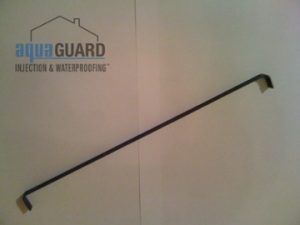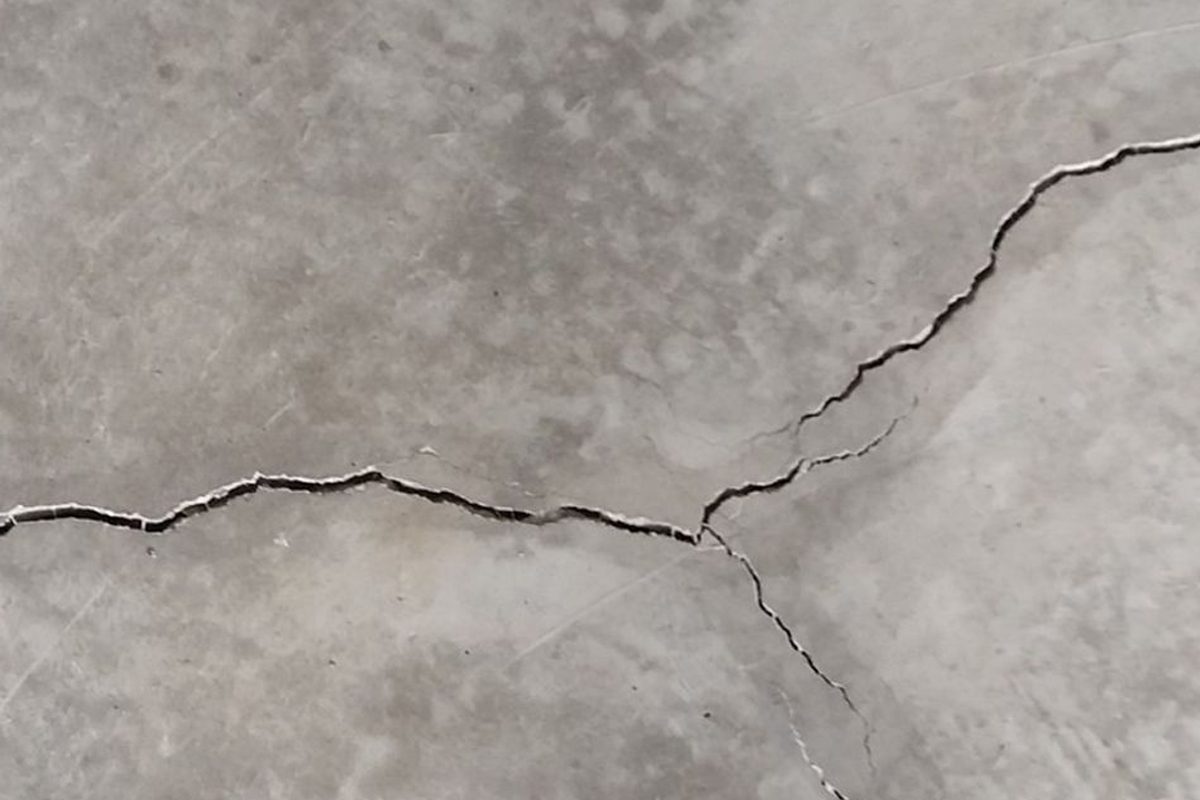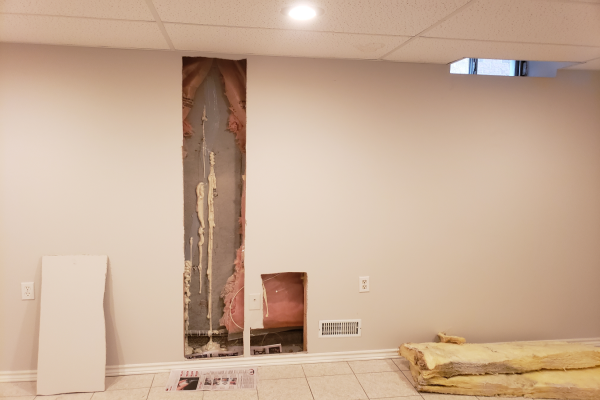Cracks in poured concrete foundation walls are commonplace; over the years we have found that the average 2400 ft² home has 7 to 10 cracks. Most of these cracks are fine, or hairline, and do not pose any structural problems, they only become a concern when water leaks through or freezes within them, or if they are unusually wide.
There are some instances when foundation cracks are larger, typically 2 – 8mm, or larger, or there has been observable movement of the concrete on both sides of the crack. In such cases, there is a risk that the crack will continue to widen due to water freezing in the crack, settlement of the footing supporting the foundation, soil shrinkage associated with dry conditions, and the natural thermal cycling of the concrete. When we encounter these situations we recommend the installation of carbon fiber staples to prevent further crack widening and movement by stabilizing the crack.
Typically spaced about 2 feet apart, perpendicular to the crack, along the wider sections of the crack, which is usually the top portion of the crack, the staples serve to prevent further crack widening and extend the life of an injection.
The carbon fiber staples are installed across the crack and the ends of the staples are inserted into epoxy filled drilled holes; furthermore, the entire staple is glued to the wall with an epoxy that provides a permanent bond. A carbon fiber staple looks like this:

![]()
To learn more about this type of structural reinforcement technique click on the links below:
Fortress Stabilization Systems – Concrete Repair, Crack, and Reinforcement article
Fortress Stabilization Systems – Countersunk staple description
Note: Many waterproofing contractors offer 25 year or lifetime warranties on their crack repairs; if large cracks are not reinforced, it is likely that the crack injection will not last for the duration of the warranty and a re-injection will be required.
Follow this hyperlink for information on structural crack repairs





